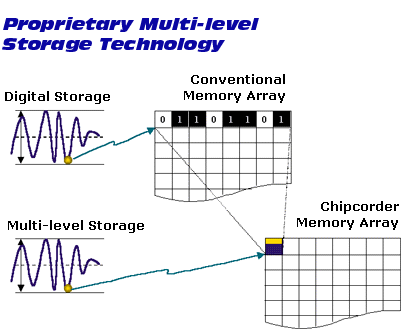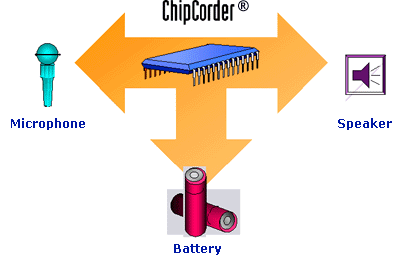| marthel.pl / offer / about winbond / products / isd / multilevel storage |
Non-volatile Multilevel Storage Technology has been developed by ISD Company and was known under ChipCorder trading name. It has revolutionized sound recording systems and caused vigorous development of "sound" product market, i.e. the products used to record, storage and playback sounds. The technology allows for extremely large recording density, high quality of sound reproduction and integration of all function into a single chip while keeping power consumption low.
In conventional solutions of sound recording, sound signal is at first sampled (at specific sampling frequency), then samples undergo to digital coding, possible digital compression and only then the binary coded sound is entered into digital memory. When playback is made, this include reverse operations. In case of 256-level quantization widely applied in telecommunications, one sample of sound signal is recorded as its 8-bit code, thus it occupies 8 cells of 2-level-record (binary) digital storage - Fig.1.
 |  |  |
Conventional Storage
|
ISD Multilevel Storage
|
Fig.1. Principles of Digital Storage and Multilevel Storage Technology
In multilevel storage technology, each memory cell may include 1 out of 256 voltage level which corresponds to 8-bit quantization. Thus, the value of a single sound sample may then be stored in a single cell, so the recording density is 8-fold higher. At the same time the record and playback processes are simplified as there is no need to use digital coders. This allows for all functional blocks necessary to addressed sound record/playback operations are contained in a single device. Sound is recorded in its natural form, which is helpful to enjoy its high quality. As the recording density is high, a single chip may provide sound duration from 10 seconds up to 16 minutes.
Since multiple functions are integrated into a single IC, applications are very economical. To get a fully operable addressable record/playback system you will need, for the simplest case, just to connect a microphone, a loudspeaker, power supply battery and several resistors and capacitors.

